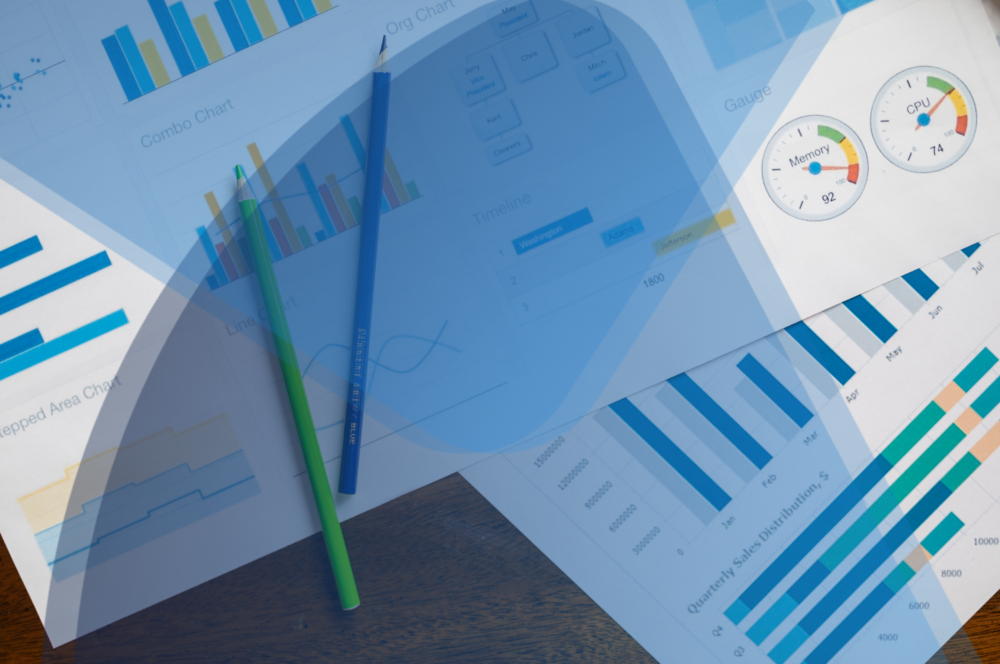Against All Odds: How Accurate Data Helps PR Firms Nail Their Forecasts
Table of Contents
At 80-1, Rich Strike was an incredible long-shot at winning the Kentucky Derby but he left spectators stunned at Churchill Downs on May 7th. His small group of supporters was overcome with joy as they witnessed the results become official—“We shocked the world, people!” roared one team member. Trainer, Eric Reed, collapsed in the paddock after watching the race play out—“I passed out,” he said. “I don’t remember what happened.” And owner Rick Dawson, who estimates Rich Strike has won “about 10” races in his life, was left in a complete state of shock and delirium—“Um, what planet is this?” he asked, in a giddy daze.
Believers were paid out at 80-1. This means if you placed a $100 bet on Rich Strike, you were rewarded $8100. Not bad for 2 minutes and 2.61 seconds.
It was a victory that no one could have seen coming. Many factors had to play out in just the right way—the competition was scratched, the track conditions had to be ideally suited, and Rich Strike needed to run the best race of his life. Not many gamblers took home cash that day at Churchill Downs, but what it reminded us all is that accurate predictions are hard, and they are not guaranteed.
If any financial forecasters were watching, they might have commiserated with those who lost money that day. The upset may have even felt symbolic of the last two years. Financial forecasting can undoubtedly feel less like science and more like gambling in times of uncertainty.
In the PR space, in particular, it’s been challenging. On the upside, industry growth levels are at a point last seen in the early 2000s, with figures peaking around 20%. But with trends like inflation, wage pressure, and a scorching hot job market, many forecasters are finding that their models from one month ago are already inaccurate.
So how can firms accurately predict their profitability with so much risk in play? Here at ClickTime, we believe your firm’s success will all come down to your data—it must be accurate. Without accurate data, forecasting becomes nearly impossible.
What is a Financial Forecast?
A financial forecast is a projected financial outcome for a firm or project over a predetermined amount of time. From the macro level, forecasts predict the overall expected profitability of the firm, but they also can be applied to any level of the organization.
In PR, forecasts commonly project different types of incoming revenue, usually for the month ahead. These types include standard monthly recurring revenue, upselling opportunities, and new client accounts. Each type of revenue represents a degree of known or unknown incoming work; the forecast’s job is to use this information to analyze and predict the likeliest financial outcomes.
When accurately created, financial forecasts are critical to a PR firm’s success for three significant reasons:
1
They Help Manage Cash Flow
Forecasts are vital in monitoring the business’s health by tracking and predicting cash flow. To run the day-to-day operations of a firm, it’s imperative you aren’t operating in the dark. Once you have an accurate forecast, you can track your burn rate in real-time. This way, you can adjust spending to ensure you don’t blow your budget.
2
They Help Plan Capacity
Capacity planning lets you know if supply (available employee hours) can meet demand (the number of hours it will take to complete your projects). A solid financial forecast should accurately predict how much work is coming in over a predetermined time period and help optimize headcount. For example, if a critical account churns, it could result in a reduction in staff. On the flip side, it may be time to hire if a firm is poised to take on new business.
3
They Allow for Sustainable Growth
You can use forecasts to also predict whether the timing is right to take on new clients. Once you understand the scope of new client work, you can refer to your forecast to determine whether the new business is in line with the firm’s priorities. If so, verify which staff has the right skills with the right availability to service that new account.
Why Bad Data is a Nag
When firms create forecasts based on inaccurate data, it’s a one-way ticket to chaos. And unfortunately, it happens all of the time. The following are three common reasons why your last forecast may have been inaccurate:
Hidden Costs
Whether it was too many non-billable hours or unexpected absences that aren’t being tracked, hidden costs tend to be a likely culprit. If profit margins remain low even after careful planning, it means that your firm isn’t properly converting revenue into profit somewhere along the way. And when this happens, it’s essential to dig in and figure out why.
Incorrect Billing Rates
Every employee in the firm will have a different billing rate, and it’s incredibly important that they are applied correctly. If your team is undercharging a client, you are essentially working at an unintended discount. On the other hand, if a simple clerical error is made and a billing rate is logged incorrectly in your system, it can wreak havoc on the entire financial model.
Confusion Over Billable Work
If a team is servicing an account, but the work itself is shoddy or not aligned to the client’s expectations, work hours that were planned to be billable must be tossed out. If the project was forecasted to take 8 hours and unexpectedly takes 16, the firm ends up swallowing that variance. In this unfortunate scenario, the team is back to square one and can’t charge the client for their own misdirection.
Make Data-Informed Decisions
When time is of the essence, sometimes it can just be faster to say yes—yes to new clients, yes to new hires, and yes to any extra hours it takes to get the job done. Therefore, it’s no surprise that firms find themselves struggling to forecast accurately. Check out ClickTime’s six tips below that firms can use to ensure they are making data-driven decisions:
1
Use a Time Investment Tool
It’s never a pleasant realization to discover that your forecast came nowhere close to your actuals. And admittedly, it can feel futile to identify the exact moment your team veered off course, especially if the answer lies buried in a massive spreadsheet.
To mitigate this, consider investing in a tool that provides transparency at every business level. For example, time tracking software can be a game-changer for forecasting in PR. If your staff is trained to log time punctually, consistently, and accurately, you get real-time, meaningful insights. You’ll understand not only how individual projects are tracking but the firm’s profitability as a whole.
The best time tracking solutions analyze project costing in-depth and flag variances in real-time – early enough for your team to make course corrections that lessen the financial impact.
2
Interpret Data with Rolling Forecasts
Firms of all sizes will pause to take a hard look at their numbers and make mid-year adjustments at any point in the calendar or fiscal year. To gain this agility, almost every firm uses rolling forecasts to adjust its models as needed. These forecasts are regularly updated to reflect any changes to the financial plan and tend to take a more realistic approach because they are based on the most recent data. This method also facilitates any necessary corrective actions in case of market fluctuations or even a black swan event.
3
Leverage Your Historical Project Performances
Most managers find it incredibly challenging to forecast budgets and timelines in PR firms. And ironically, it isn’t inherently their fault. Psychologists have found that humans tend to forecast their work optimistically time and time again. This phenomenon is known as the “Planning Fallacy.”
The best way to avoid the planning fallacy is to reference data from past projects. By reviewing historical project data, you can compare the price tag on similar initiatives. This comparison will allow you to create realistic budget estimates and correctly set client expectations. Doing so mindfully will both grow trust with your clients and protect your profit margins.
4
Communicate Cross-Functionally
While the forecasting process is unique at each firm, cross-functional communication is imperative. For example, project managers and financial forecasters need to communicate seamlessly. If a team member is due to be out on leave, and the financial forecaster isn’t aware, that staffer’s expected billable hours may be included in the forecast, already putting the team behind.
5
If Guessing, Refer to Industry Benchmarks and Statistics
There will be times when you don’t have every piece of information you need to forecast accurately. In this case, instead of guessing, compare your overall plan to PR industry benchmarks and statistics. Performing this routine analysis will give you important insights into industry trends and norms that could potentially inform your forecasts. In addition, compare your current sales pipeline to your historical close rates and consider what impact churn rates could have on the business.
6
Strategize for Both Old and New Business
Every client’s journey with the firm will likely be unique, and some accounts will be more profitable than others. This may very well be intentional because firms service accounts for different reasons.
For example, you may have blue-chip clients that you’ve serviced for years. These accounts are ideal because the scope of work tends to be predictable, and trust has already been established. You know what they’re looking for and how they define excellent service. They represent a monthly recurring revenue stream, and they allow for a modicum of financial stability.
On the other hand, unknown clients require more time to onboard and align expectations. Your team will likely need to spend extra time educating themselves about their particular pain points. But remember, be clear about the project scope with new clients. The last thing you’ll want is to overservice, which can quickly shrink your profit margins.
Before forecasting, calculate each account’s expected profitability and average the monthly revenue you expect. Each month you can anticipate reliable results but still account for the firm’s strategy.
Understand the True Cost of Incorrect Forecasts
No PR firm, large or small, can afford to routinely miss its forecasts.
Trying to steer toward short- or long-term goals without relying on accurate data will always fail. Although you’ll likely never be able to forecast with 100% accuracy, you can ensure your firm’s forecasting goals are strategically developed and attainable by using the methods above.
Eastwick Communications Saves Millions with Resource Planning
Eastwick was manually tracking time and planning resources with Excel spreadsheets. See how Eastwick integrated their time tracking and payroll systems to reduce non-billable hours.









